Whether spring, summer, or autumn, flowers make the world a better, more beautiful place. Some of the easiest and most beautiful blooming plants are grown from bulbs. Not all bulbs and corms (similar to bulbs) are easy to grow, though, so it’s a good idea to figure out which ones work in your USDA Grow Zone and are easy enough to care for with your skill level as a gardener and time commitment to the art.
Which Bulbs are Easiest to Grow?
Tons of bulbs make for easy choices for beginners, including:
- Dahlias
- Asiatic lilies
- Oriental lilies
- Tulips
- Freesias
- Amaryllis
- Muscari (Grape hyacinths)
- Hyacinths
- Daffodils
- Snowdrops
- Peonies
- Allium (Ornamental onion)
- Salvia
- Crocus
Dahlias
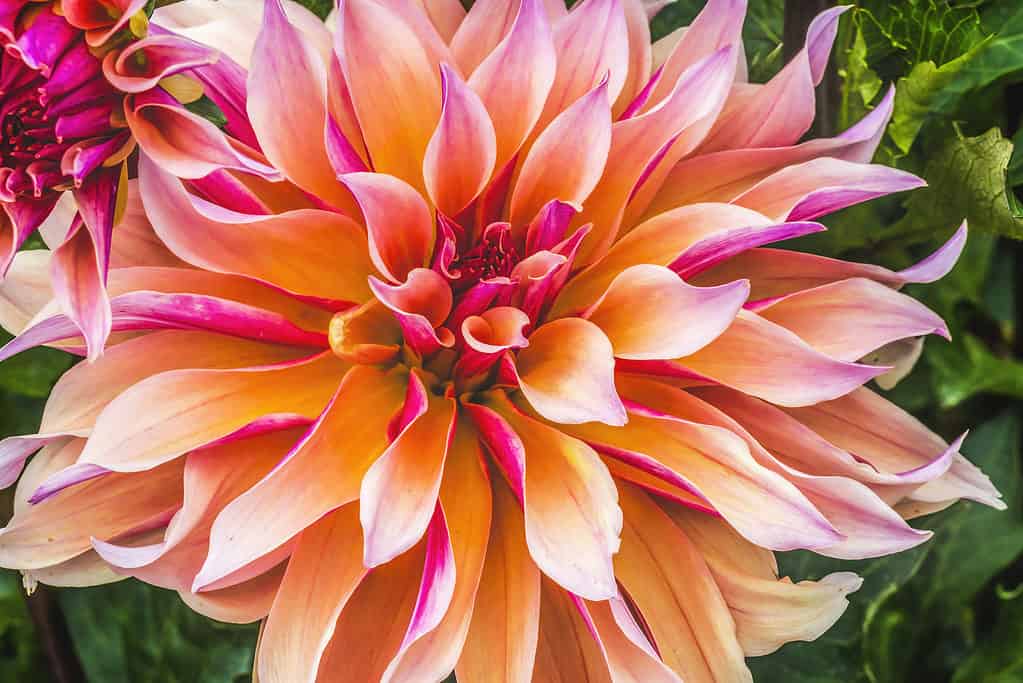
The bold, vivid tangerine and magenta Dahlia sp. ‘Labyrinth’ is one example of a bi-color color form.
©iStock.com/bpperry
Donning bold blooms in an array of colors, the dahlia is a bulb flower often chosen as a border flower in full sun locations in gardens and yards. The stunning blooms come in peach, lavender, yellow, orange, pink, black, red, white, cream, silver-blue, violet, and tangerine, as well as bi-color combinations. The plants are tuberous bulb plants that thrive in USDA Growing Zones 8 to 10.
Asiatic Lilies
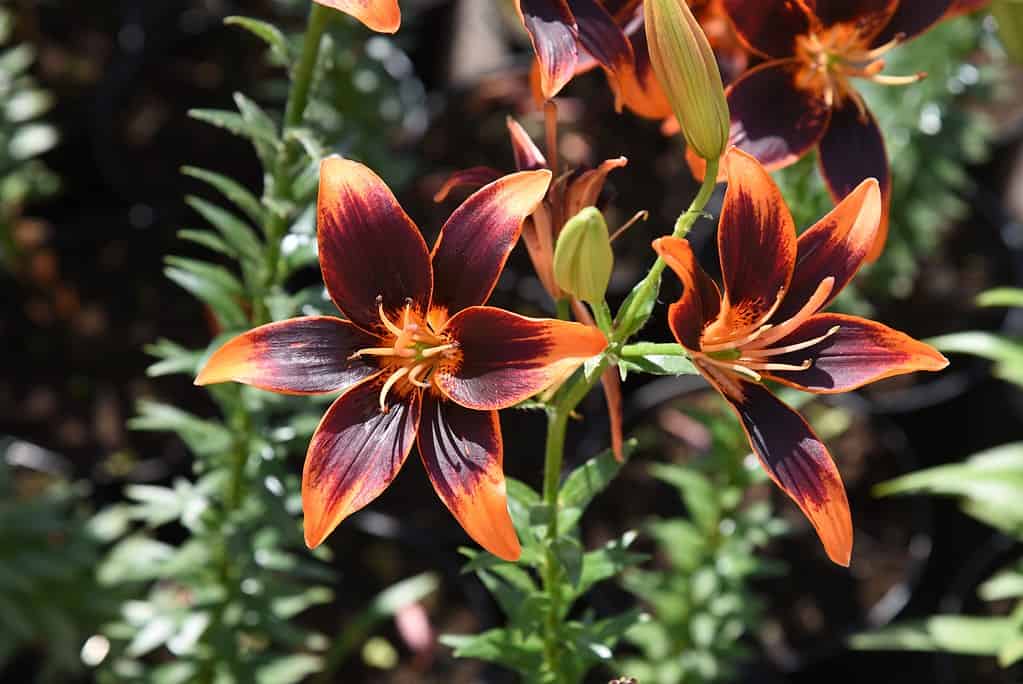
Forever Susan is one variety of Asiatic lily that comes in bold orange and black-red blooms.
©photoPOU/Shutterstock.com
Blooming in early summer, Asiatic lilies come in many varieties, colors, and forms. The plant is similar to Oriental lilies but they bloom in warmer tones like orange, red, pink, and yellow instead of the cooler shades Oriental lilies tend to come in. The heavenly scents of Asiatic lilies help to make them popular choices as well, especially since they are exceptionally easy to grow.
Oriental Lilies
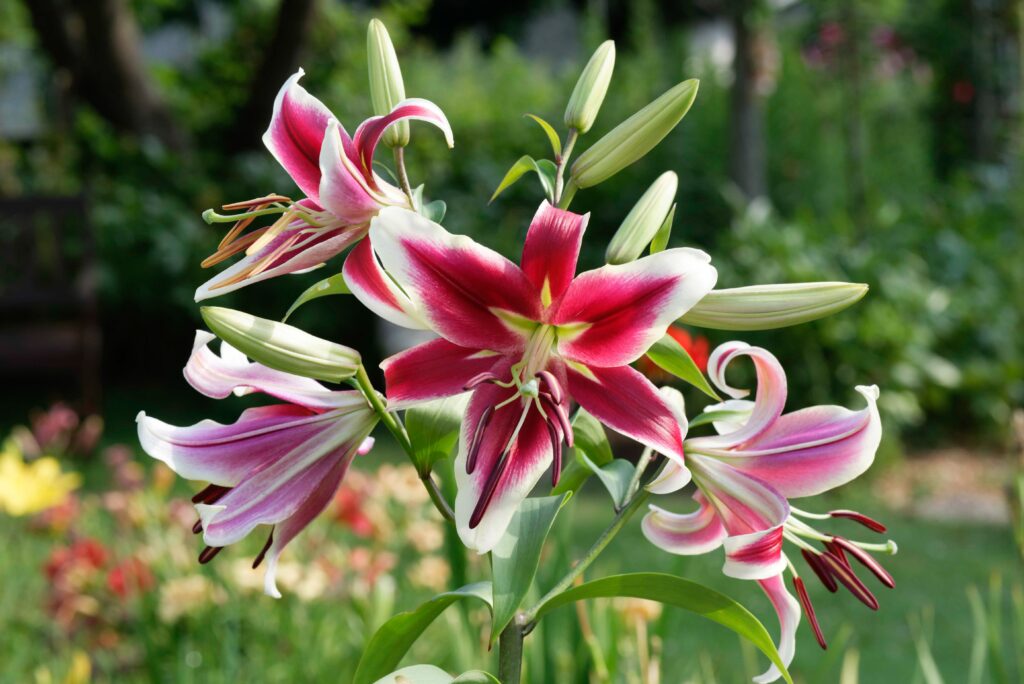
Oriental lilies are typically stunning blooms, often coming in multicolor forms like this Lilium ‘Flashpoint’.
©Walter Erhardt/Shutterstock.com
Among the Oriental lily plants is the stunning Stargazer lily, a vibrant, warm lily that attracts bees, hummingbirds, and other pollinators. With bright fragrances and stunning flowers, the easy to grow bulbs are exceptionally popular among gardeners, whether choosing Stargazers or pure white lilies. Be sure to plant them in well-draining soil in a full sun to partial shade location.
Tulips
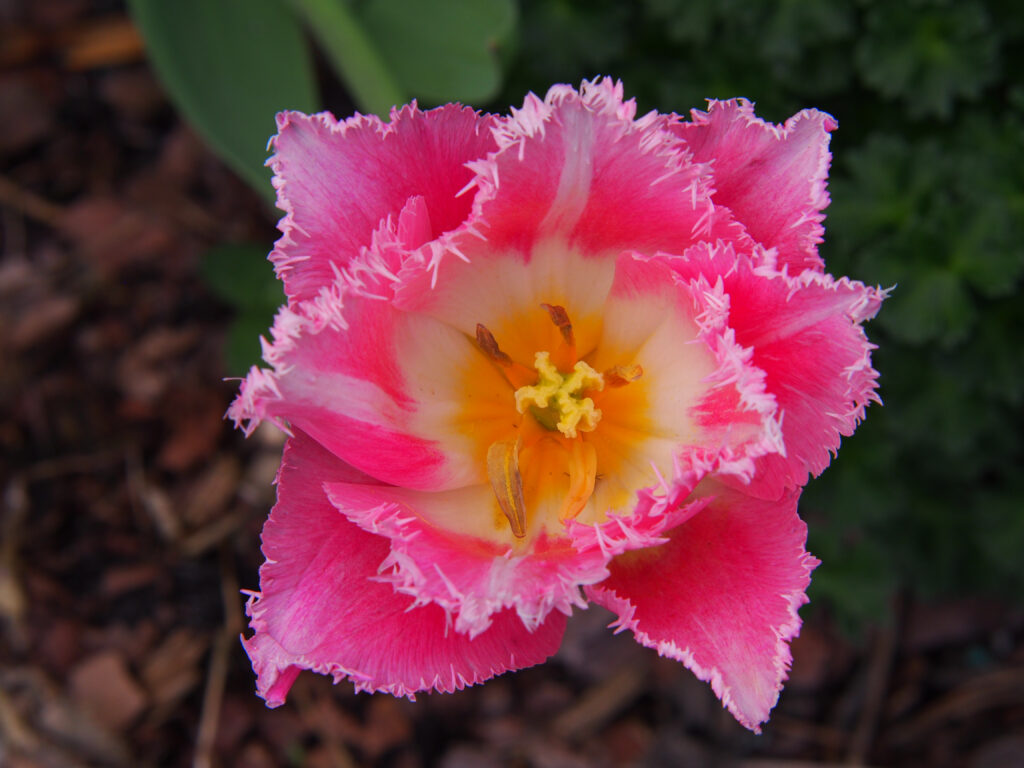
With its unique shape and delightful colors, the Crispion Love Tulip is sure to bring beauty into any outdoor space!
©Anna Gratys/Shutterstock.com
Famously considered Dutch, but originating in Central Asia and gaining ancient popularity in the Ottoman Empire (Persia), tulips offer stunning blooms in any shade you can think of, save true blue. The spectacular bell-shaped blooms are easy to grow, springing up in late spring (usually late April to mid-May). The stunning flowers have inspired festivals the world over, with some of the biggest ones containing nearly a half million flowers each year.
Freesias

Vibrant and inviting, the white freesia is an easy to grow flower.
©iStock.com/bea8476
Coming in red, white, blue, pink, yellow, or pink, freesias are a stunning choice in easy to grow bulbs. Belonging to the iris family, the tubular flowers spring out of a spike on a beautiful plant with gorgeous greenery. Technically, freesias grow from corms, making them not “true bulbs” but they grow in the same way. Plant these beauties in autumn for a late winter or early spring crop of stunning blooms.
Amaryllis
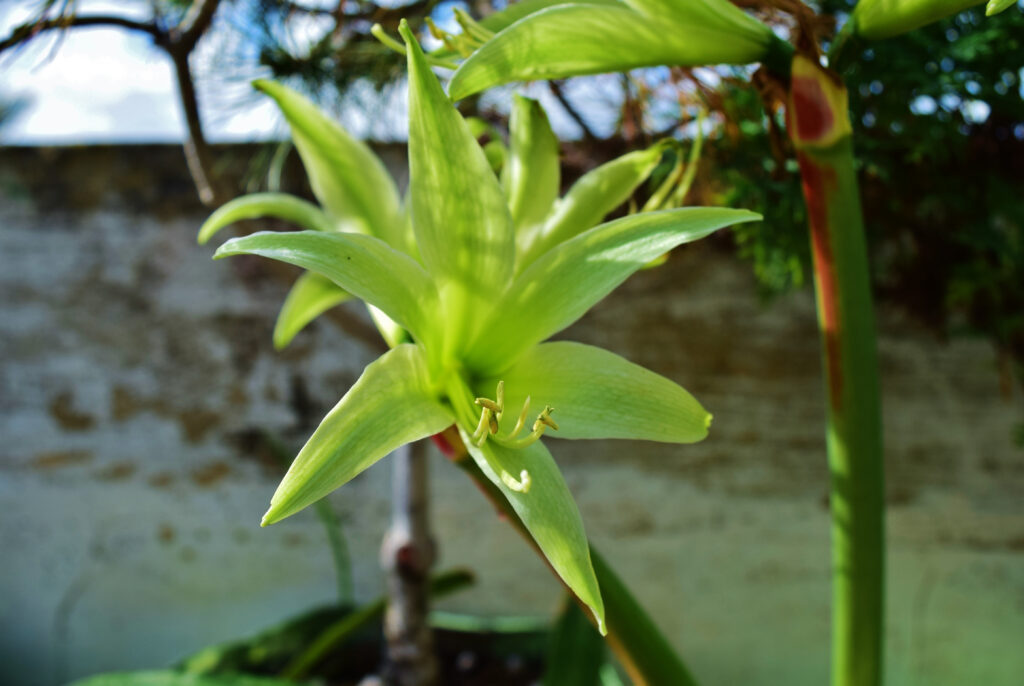
The potted cybister amaryllis evergreen flowers in a roof garden in Malta, showing the plant truly comes in a wide range of colors.
©iStock.com/Wirestock
Large blooms in a wide range of colors pop out of the long, elegant stalks on the elegant, exotic-looking amaryllis. Larger blooms of amaryllis produce more flowers about 10 to 12 weeks after the bulb has been planted. They thrive in USDA Growing Zones 8 to 10 as spring bloomers, as long as they have 6 to 8 hours of direct sunlight and well-drained soil.
Muscari (Grape Hyacinth)
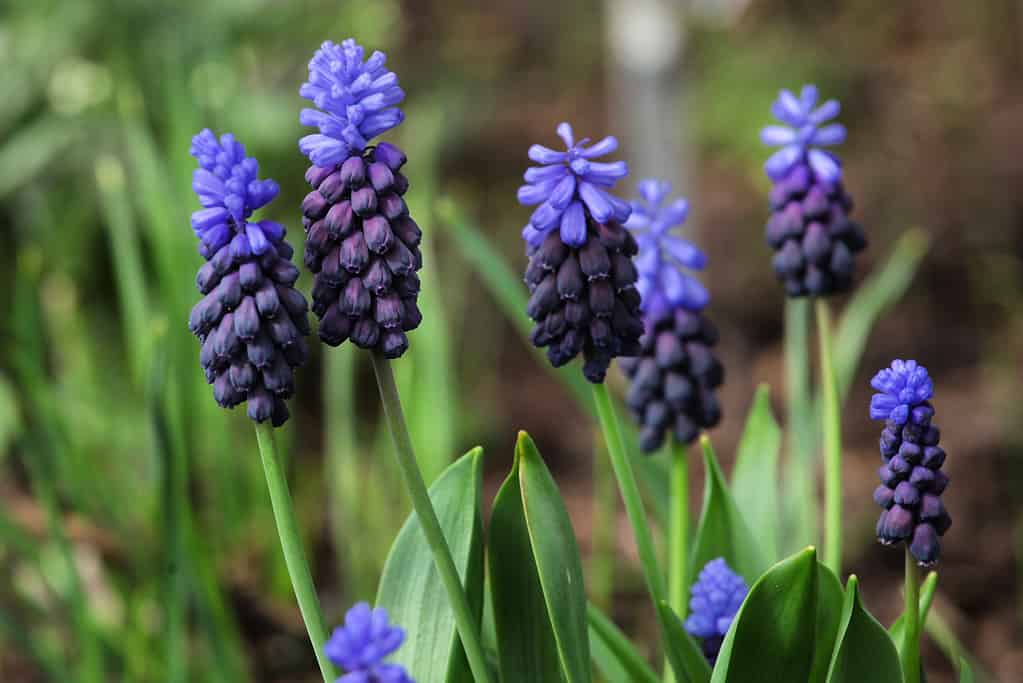
Two-tone muscari in full bloom make an eye-catching sight in any garden.
©Alex Manders/Shutterstock.com
Producing a spike full of grape-cluster looking purple, white, pink, even green blooms, the grape hyacinth, or muscari, is actually not a true hyacinth but in the same family (the asparagus!). Bold blooms, sweet aromas, and easy to grow: these stunners have it all. Plant them 2 inches apart, in partial shade for long-lasting blooms or full sun for deeper colors, in well-draining soil.
Hyacinths
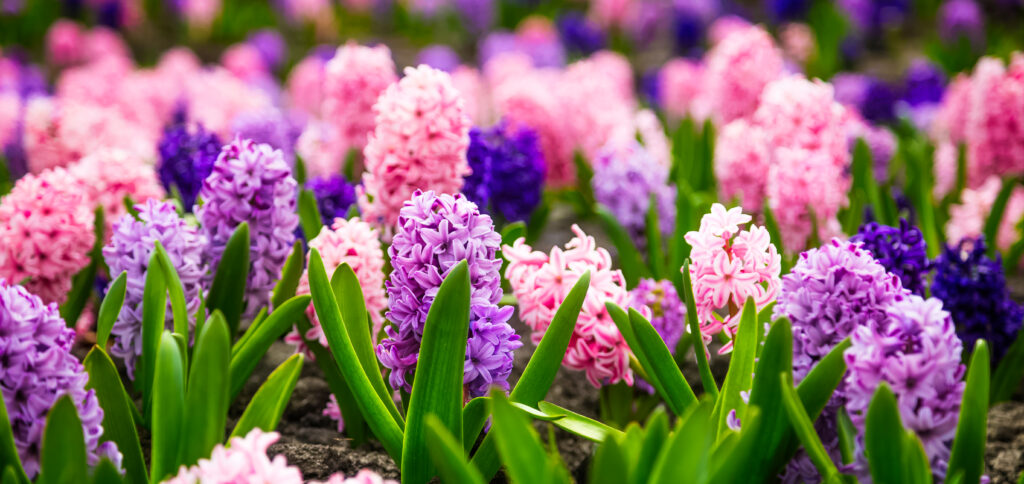
Hyacinths are known for some of the most fragrant and intoxicating flowers.
©Kateryna Mashkevych/Shutterstock.com
A popular early spring bulb plant is the hyacinth, one of the most fragrant and intoxicating flowering bulbs anywhere. The stunning hyacinth produces spikes of purple, white, pink, blue, lilac, lavender, mauve, cream, and similar shades in their flowers. Plant them from late summer to early autumn in well-draining soil in light shade or half a day of sun.
Daffodils

Poeticus Daffodils are cheerful, perennial flowers.
©Rabbitti/Shutterstock.com
One of the first blooms of the season belongs to the bright, cheerful daffodil. The bright yellow to white blooms thirst for loads of water and thrive in at least 6 to 8 hours of sun daily. Keep the soil moist without water logging it and celebrate the perennial regrowth of the stunning flowers year after year.
Snowdrops

Snowdrop flowers bloom in the winter.
©iStock.com/Muzka
The dainty blooms of snowdrops have been celebrated the world over for centuries as they produce bright, delicate white blooms in late winter into spring. The gorgeous plants come in a wide range of white-blooming varieties, largely gaining the plant its name. Plant the lovely Galanthus bulbs about an inch apart for the brightest display and avoid water logging the soil. Make sure they get light to moderate shade for protection to keep the plant healthy and thriving.
Peonies
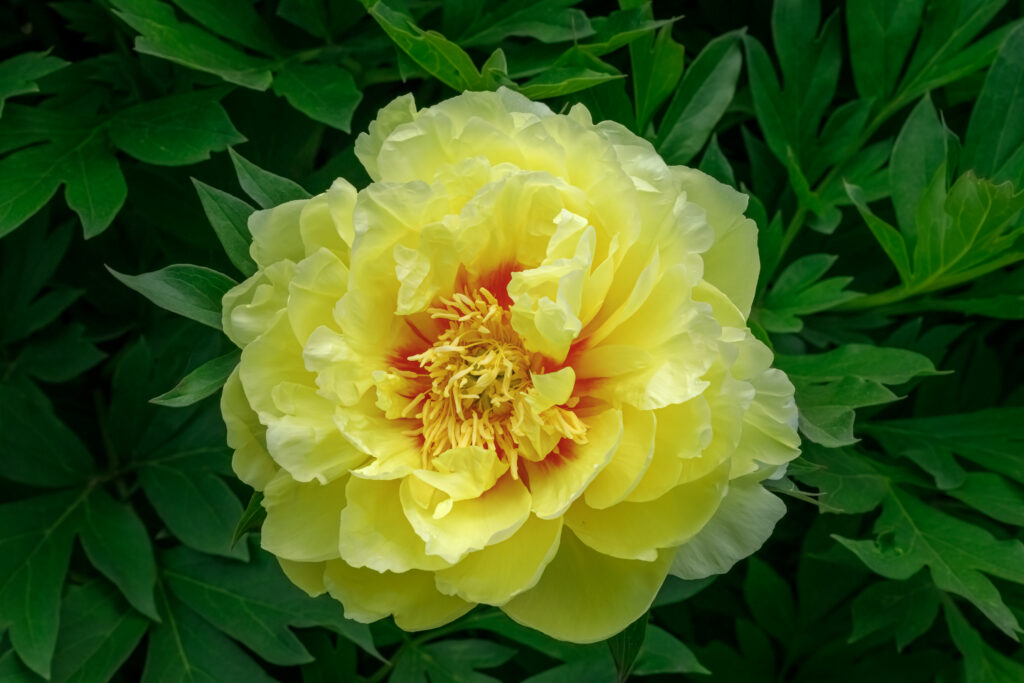
Double peonies typically bloom in the late spring or early summer, depending on the growing conditions.
©Nnattalli/Shutterstock.com
Fragrant and perennial, peonies are some of the best and easiest bulb plants to grow. The stunning plants grow up to 3 feet tall, as long as they have full fun for 6 to 8 hours a day, in well-draining soil that is kept moist but not wet. They thrive in USDA Growing Zones 8 to 9. Be sure to provide some shelter against intense sun.
Allium – Ornamental Onions
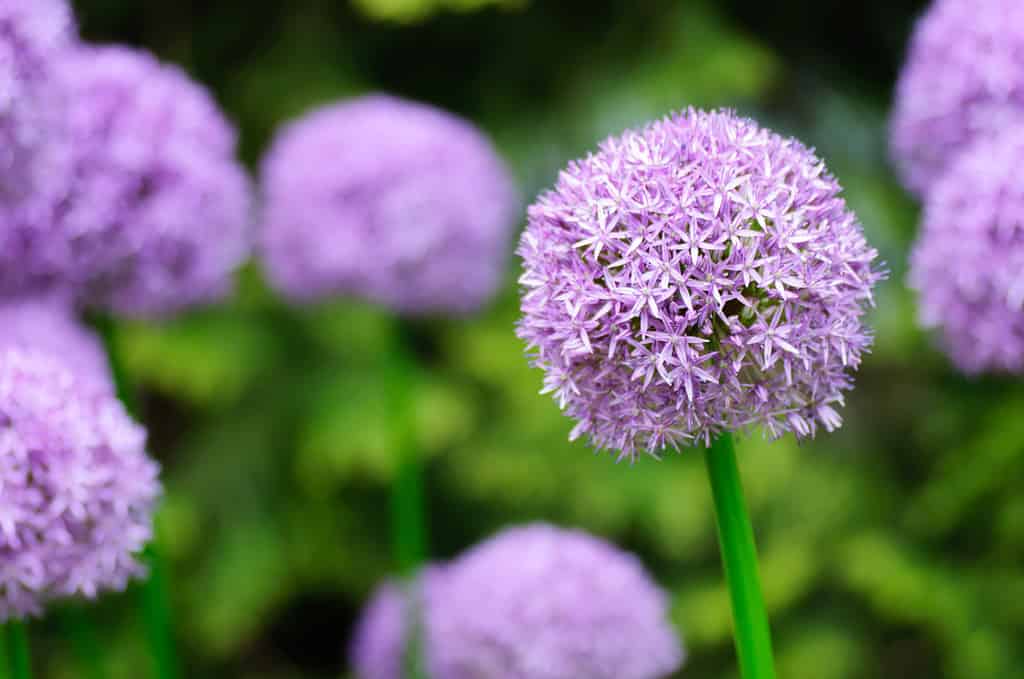
Giant Purple Allium Flowers look a bit like pom poms made of purple stars.
©iStock.com/jamesvancouver
While they have a pungent aroma that helps keep critters away, Allium, or ornamental onions, are some of the easiest and most gorgeous bulb plants to grow. Often, they’re thought of as autumn bulbs that bloom in late spring, but they may have other growth patterns, depending on your locale and planting scheme. Thriving in USDA Growing Zones 4 to 9, these beautiful plants need infrequent watering and fertilization.
Salvia
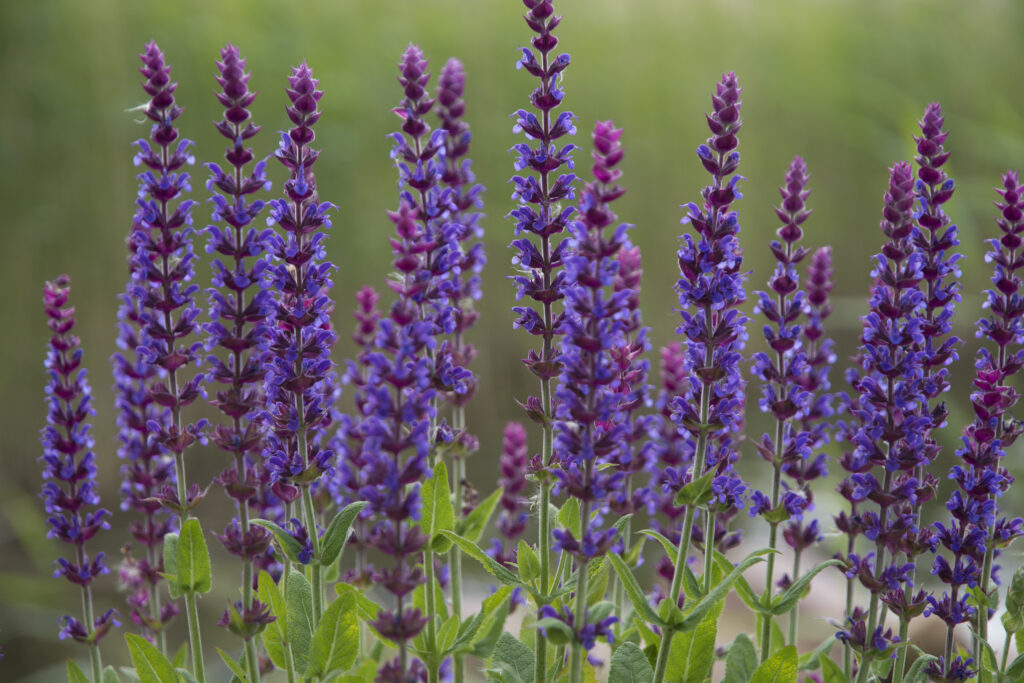
Sage flowers, Salvia officinalis, look like lavender but are easier to grow.
©Artesia Wells/Shutterstock.com
Often confused with lavender, Salvia is a brilliant purple blooming plant perennial that’s a stunning option for the garden. Known sometimes as perennial sage, the plant is pretty chill on the maintenance scale, infrequently needing watering, indifferent to soil type, and fragrant all through the blooming season. Salvia may come in blue, purple, pink, or white blooms. Most varieties are cold hardy to USDA Growing Zone 4 and heat tolerant to Zone 10. They need full sun, in well-draining soil.
Crocus
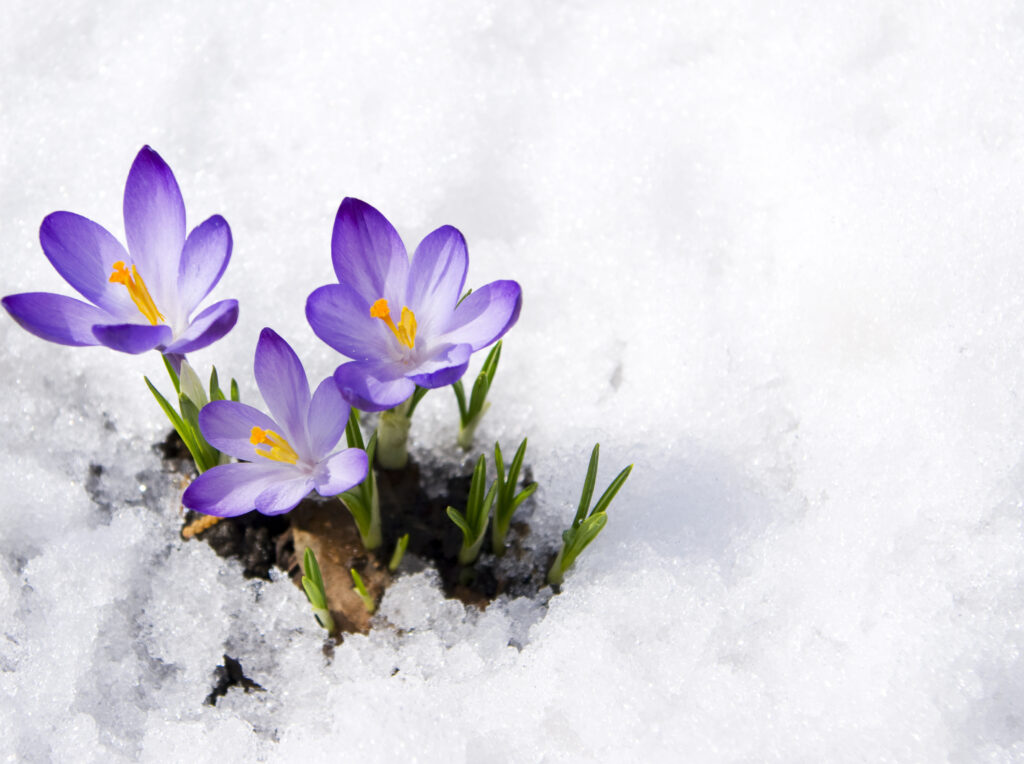
Yes, crocuses blooming in the snow is a thing!
©Volkova Irina/Shutterstock.com
Another true bulb plant, the crocus comes in shades of pink, purple, white, yellow, and bi-color combinations thereof, sometimes with accents in deeper shades. They’re some of the first plants to bloom, often popping blossoms up through the snow towards the end of winter. Suiting rock gardens brilliantly, they love full sun, well-draining soil, and tend to be low maintenance. They should be grown in USDA Growing Zones 3 to 8.
The photo featured at the top of this post is © Rudenko Alla/Shutterstock.com
Thank you for reading! Have some feedback for us? Contact the AZ Animals editorial team.






